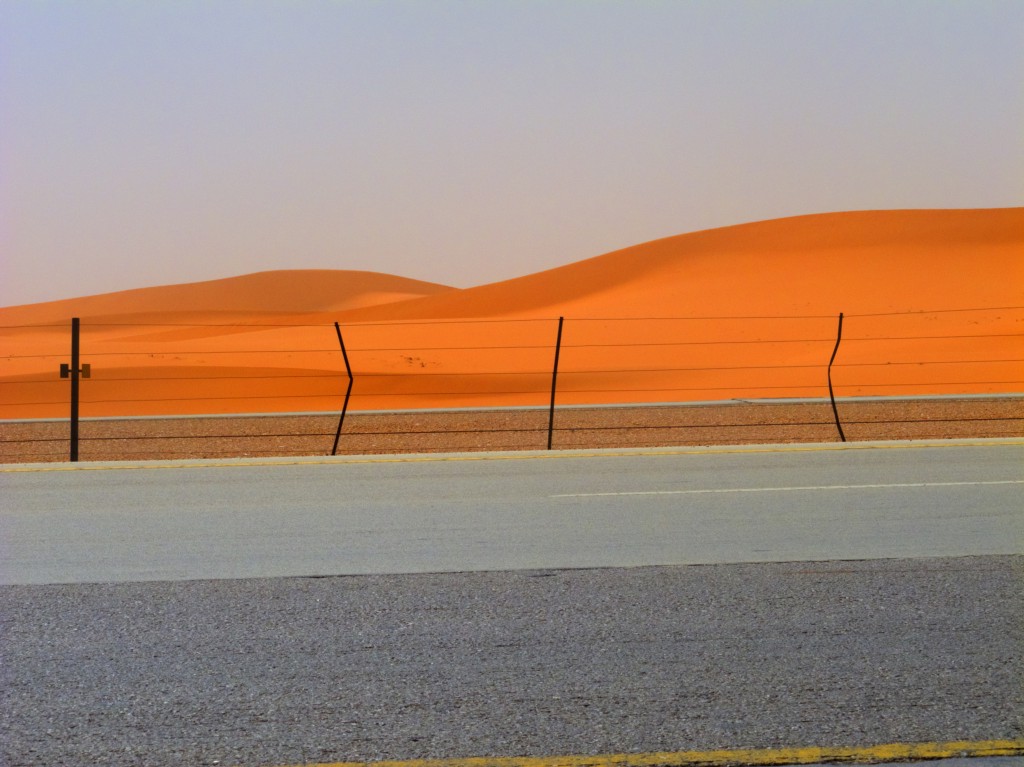Apocalypse Tourism
by Rachel Monroe

This year I broke up with someone important and I didn’t know what I was doing for a little while. I spent too much money on a dress with a cactus pattern, but every time I looked at it in my closet I thought: I can’t wear that, I’d look like a tourist. I live in West Texas, and every day I see how the tourists dress up for the desert, all ponchos and wide-brimmed hats, allowing themselves to indulge in fringe.
Several years ago when I lived in an east coast city, my friends and I all talked about moving to a farmhouse upstate, vague fantasies of tomato plants and swimming holes and wood-burning stoves in the winter. Recently, the collective daydream shifted; now everyone wants to come to the desert. In Marfa, where I’ve lived since 2012, a new four-story hotel — the tallest building in town! — is set to open next month to accommodate all the visitors. In October, Travel & Leisure reported on the “new set of creative urban refugees… flocking to the town of Joshua Tree.” For the first time in a decade, more than a million people visited Death Valley last year. Succulents are on trend and there’s prickly pear juice in the cocktails.
The tourists come for the desert’s skyscapes and crumbling adobe buildings, its mysticism and tequila and Instagrammable earth tones. I’m a tourist, too, of course, even if I’m moving at a pace of years instead of days. When people ask me how long I plan on staying in Marfa, I answer vaguely: “It’s not my forever-place.” Whatever that means. Between the fancy grocery store and Amazon Prime, Marfa is hardly a place of deprivation. But even with kale and art openings, the desert is hard. Trash snags in the scrubgrass. Only rich people have lawns. Last week, a pack of stray dogs chased me down the street, and today the wind is so strong it feels like the house is under attack. When I go back east, I always get a little emotional the first time I see a cluster of trees — the easy abundance! All that green!
This is a strange time for a desert exodus. Though the whole world is getting hotter, climate change is affecting deserts much more quickly and direly than other parts of the planet. Cities in the Persian Gulf may be too hot for human habitation by the end of the century; the Joshua Trees will probably all die; there was a historic drought and then historic wildfires; we’re running out of water and draining our rivers; the towns are increasingly meth-y and militarized, and the only one who’s hiring is the Border Patrol.
I used to get so annoyed with people who talked about how end of the world was imminent. The inability to imagine human existence going on after you just seemed like the most grandiose form of narcissism. Increasingly, though, things feel bad in a big way — and I’m wondering whether people are coming to the desert not in spite of, but because of, its approximation of apocalypse. Maybe it’s attempt at inoculation, or a kind of masochism. Or maybe we just want to look at what we’ve done. If the farmhouse is a fantasy of refuge or retreat, the desert is a confrontation. We live among the trash of other eras, their old cars left to rust and their graveyards of historic, pre-pop-top beer cans. It’s too hot, and there is no shade.
I for one celebrate this move away from the bucolic and toward something more harsh and elemental, this aesthetic of bleached bones and regret. It may be too late, but we do the best we can anyway. When there’s no moon, the stars are bright. Our mistakes will outlive us, rusting into something that someone someday might consider beautiful.
Photo by edward musiak
Save Yourself, a collection of essays from writers we love, is the Awl’s goodbye to 2015.
